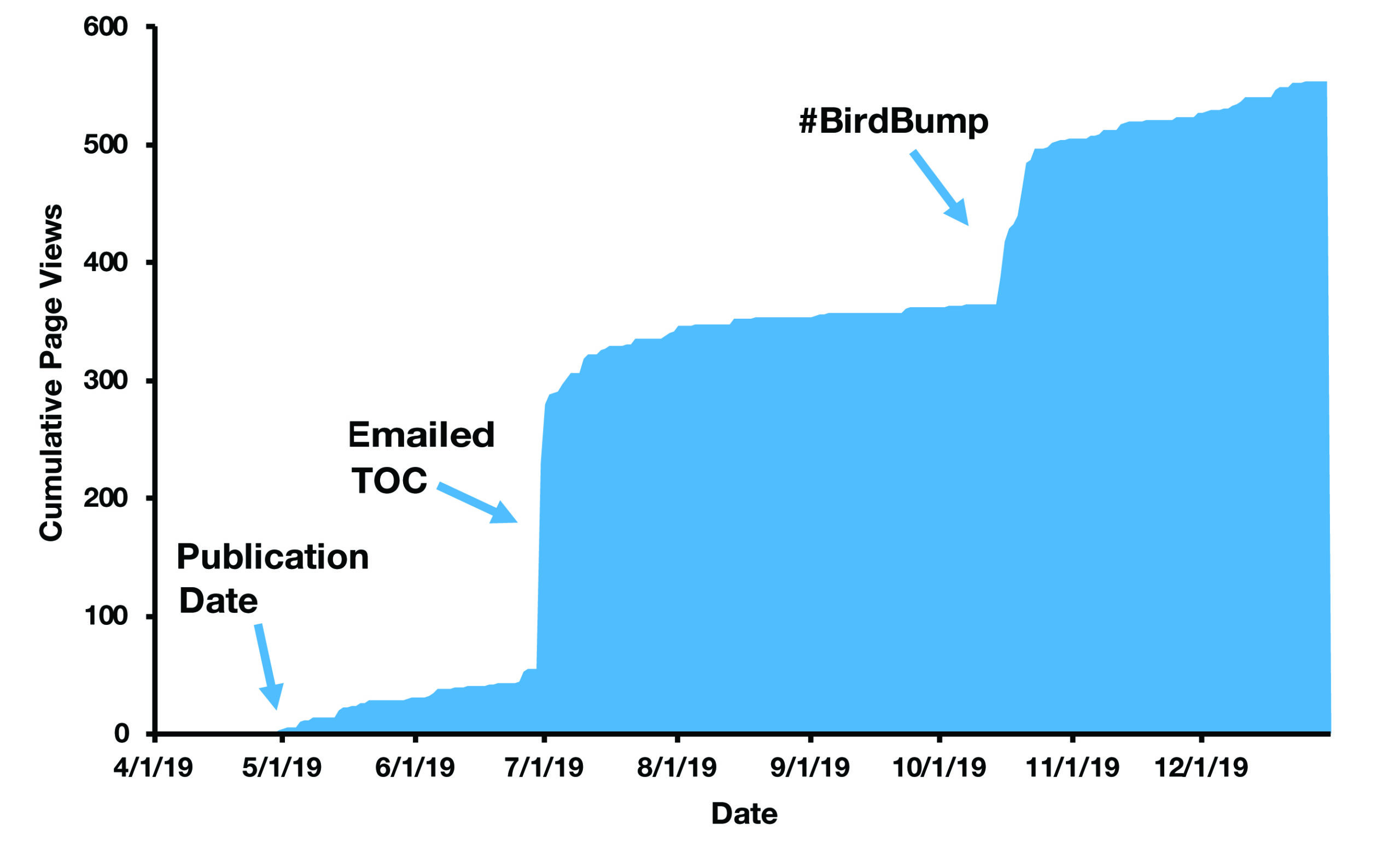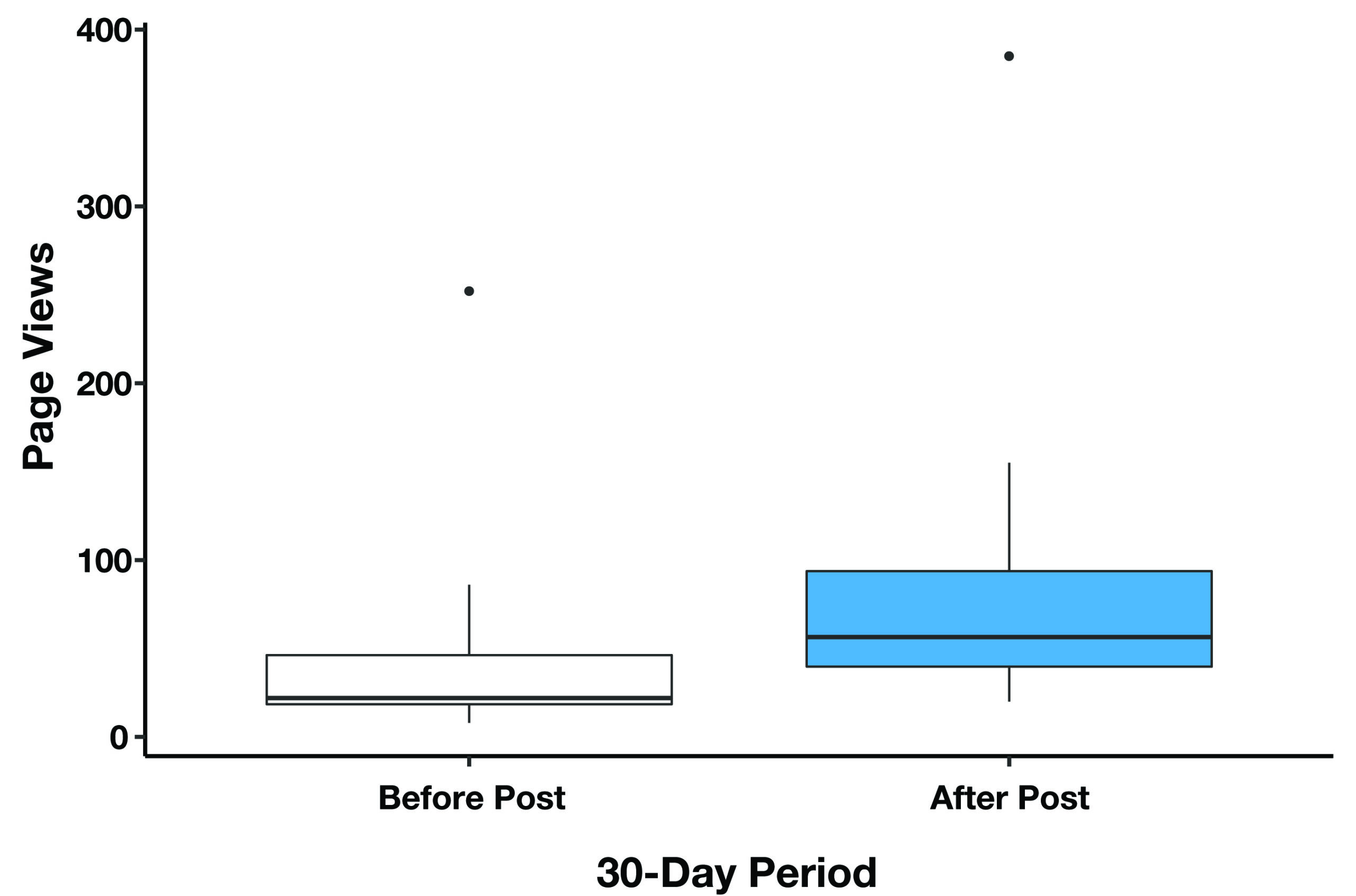Busy editorial offices trying to keep up with publishing trends should evaluate the tools available to them to ensure they are having a measurable outcome. In this case study, social media was evaluated for its ability to drive readers to a new peer-reviewed journal.
The competition for reader attention is high. There are easily tens of thousands of scientific journals—as well as an endless number of other media platforms and an ever-changing landscape of digital connectivity—creating an overwhelming number of places for readers to go for information. This has resulted in an explosion of ideas for editorial offices to attract reader attention. This race for novelty and attention has the potential to strain an editorial office already at capacity trying to keep up with all the other trends and movements in publishing.
Several great ideas have been proposed in the discussion for attracting readership, including graphical abstracts, article videos, journal podcasts, and more. At conferences, these ideas are easy to discuss, and listening to bigger publishers with a lot of resources give an overview of them creates excitement; but to implement them effectively when editors get back to the office takes real resources. Editorial offices can strain to keep the normal production wheels turning efficiently—trying to meet the demand of quick times to publication—so some of these ideas can challenge capacity and require that other things be moved aside to create the space needed to implement them. Further, the proper execution of these strategies can be challenging, especially for smaller publications with more limited resources. Doing something and doing something well are not necessarily the same thing. How can editorial offices juggle all of these initiatives and determine which of them are worth their time? Perhaps more importantly, which of them are truly effective and not simply creating work for the sake of the appearance of innovation? Our association’s publishing group discusses this often, and the answers are rarely easy or straightforward. Like many association publishers, we have limited resources (time being chief among them), and we want to be sure any projects we launch have a measurable outcome before we commit our sacred bandwidth.
A New Association Journal
The American Water Works Association (AWWA) is a nonprofit member organization in support of the drinking water industry. The association’s flagship periodical, Journal AWWA, has published articles continuously since 1914 on the science, technology, and management of water. The magazine has historically had a mix of content ranging from thought-leadership pieces to highly technical peer-reviewed science. In recent years, there was a desire from the association for this flagship periodical to be more accessible and conversational, so the business decision was made to separate out the peer-reviewed content and publish it in an online-only platform—a new journal titled AWWA Water Science. Launched in 2019, the start of this new peer-reviewed title presented several challenges, perhaps the largest being journal visibility and researcher engagement.
Our membership of approximately 50,000 individuals had been accustomed to our printed and distributed content in our magazines, and they were used to that content being sometimes very dense and technical. Changing the tone and voice of the magazine had its own unique challenges, but promoting to the marketplace that our peer-reviewed articles were in a new location was very much top-of-mind. Further, our editorial team now had to manage the content for multiple periodicals, so our bandwidth for taking on projects was somewhat limited. As we evaluated strategies for driving readership, we wanted to ensure that whatever we tackled had the desired outcome, and we wanted any added work to be organic to our workflow so it wouldn’t create big burdens for our team.
The Appeal of Social Media
As we evaluated our options, one of the first places we looked was social media. Whatever your opinion of social media, it is hard to ignore the fact that scientists are using it—a lot. There are ongoing discussions about whether social media benefits outcome metrics (e.g., citations), but there is a universal consensus that it adds value to an overall scientific communication strategy. At the most basic level, studies suggest it increases discoverability by people outside of a researcher’s small scientific circle (e.g., Côté and Darling1). Scientists are already going to social media to promote their research, so it seemed logical for us to go to where scientists are already engaging and simply join them there. And it wasn’t much strain on our workflow. Editors processing articles for publication are getting into the weeds of the papers anyway, so asking them to pull out one compelling sentence that would make a nice social media post did not create a large workflow hurdle to jump. We made the decision to launch a social media campaign targeting Twitter and LinkedIn, our association’s 2 most-used platforms.
Evaluating the Impact
In late 2019 when we discussed this project, AWWA Water Science had already accepted and published dozens of articles. Much of the content had been online for several months without any promotion outside of our standard email to membership containing the table of contents. As a start, we contacted all the corresponding authors with a template email informing them of our plan and asking them to submit any social media handles if they had them. Then, our editorial team sat down with the association’s marketing department to discuss the concept of a tweet as some members of our team didn’t have much experience with social media. We reviewed the various elements of a tweet: what makes a good tweet, best practices and things to avoid, and how we would efficiently capture tweet information as part of our workflow. Once we were all on the same page, we divided up the published articles and started the task of composing tweets for our backlog. When that was finished, we assembled them and handed them off to our association’s marketing team. Our association had a brief discussion about whether we should create a new Twitter handle for our new journal or simply use the association’s Twitter account (@awwa). In the end, we opted to use our association’s handle—the principal reason being that our association’s accounts already had tens of thousands of followers, so there wouldn’t be a need to build a social media following from scratch, which can be a very difficult task. Also, it allowed us to put important research findings in plain English in front of a large community of people who care about water. Our marketing team set up a schedule for our content to be included in the association’s social media calendar. Then we waited.
We wanted to evaluate the success of the campaign to know that this work paid off and that we were, in fact, driving readers to our content. After the bulk of the tweets went out, we examined the cumulative page view of the articles so we could characterize—in a qualitative and descriptive way—what happened after an article was published and after it was featured on social media. Then, we took a deeper dive into the data for these articles to quantitively evaluate the success or failure of the tweet campaign. We did this by comparing total article page views for 30 days before and 30 days after a social media post.
The #BirdBump
When we looked at the article traffic in a qualitative way, a general trend in page views emerged. Figure 1 shows article traffic for one of the articles we analyzed, and this pattern is consistent with the general trend. When an article was first published, page views were relatively low.

In Figure 1, note that for the first 2 months of this article’s life, there were fewer than 100 views. When the issue closed and we distributed the electronic table of contents to our membership, we saw a large spike in page views. However, that traffic did not continue; it plateaued. When the scheduled social media posts hit our association’s platforms (Twitter and LinkedIn), we saw another smaller spike in article page views (see #BirdBump in Figure 1, which is a neologism for the increase [bump] in traffic that corresponds with the day we posted on social media), and a small growth in the rate of cumulative page views after that.
At the time we examined this, there were 20 articles that were published, announced in an online table of contents, and had a social media post with enough time for analysis, so we used these articles to quantitatively examine the impact of the campaign. Results suggested that the social media posts led to a significant increase in article traffic to content pages on the journal website (Figure 2).

On average, articles experienced about 250% more traffic in the month following a social media post (i.e., a bump from the previous page-view plateau). While all articles had social media engagement, there were varying amounts of interactions. Some articles experienced marginal increases in page views (in fact, one had fewer views after the tweet), but others saw engagement grow by around 1000%.
The Takeaway
While results varied—likely because of differing marketing strategies, author participation, unrelated web traffic, and general interest in the topic—we determined that posting articles on social media had a positive effect and was worth the marginal addition to our workload. Our results suggested that posting an article on our social media platform reached a different audience that wasn’t organically discovering the research, didn’t receive the email with the table of contents, or simply didn’t look at our other communication efforts. Clearly, this will be different for every title and every publisher (our journal is published by a member association with an in-house social media team and a sizable online following). Our strategy may not apply to other publications, and it is very important for editorial offices to evaluate what tools are right for them.
The field of publishing is exciting. There are a lot of innovations and new ideas, but when it comes to incorporating them, it is important to determine the following: 1) whether you have the capacity to execute them well and 2) whether they are truly addressing a problem by using an evidence-based approach. Using this sort of data-driven examination, it becomes easier to allocate limited resources in a way that is effective and efficient.
Note: TWITTER, TWEET, RETWEET, and the Twitter logo are trademarks of Twitter, Inc. or its affiliates.
References and Links
- Côté IM, Darling ES. 2018. Scientists on Twitter: preaching to the choir or singing from the rooftops? 3:682–694. https://doi.org/10.1139/facets-2018-0002
Geoffrey S Shideler (https://orcid.org/0000-0002-0160-2973) is the editorial manager of periodicals at the American Water Works Association in Denver, Colorado.
